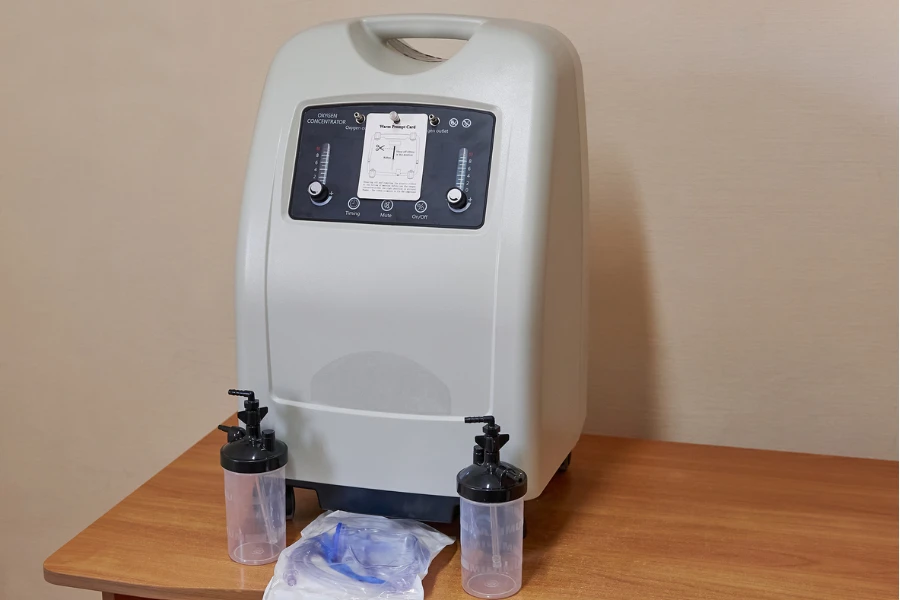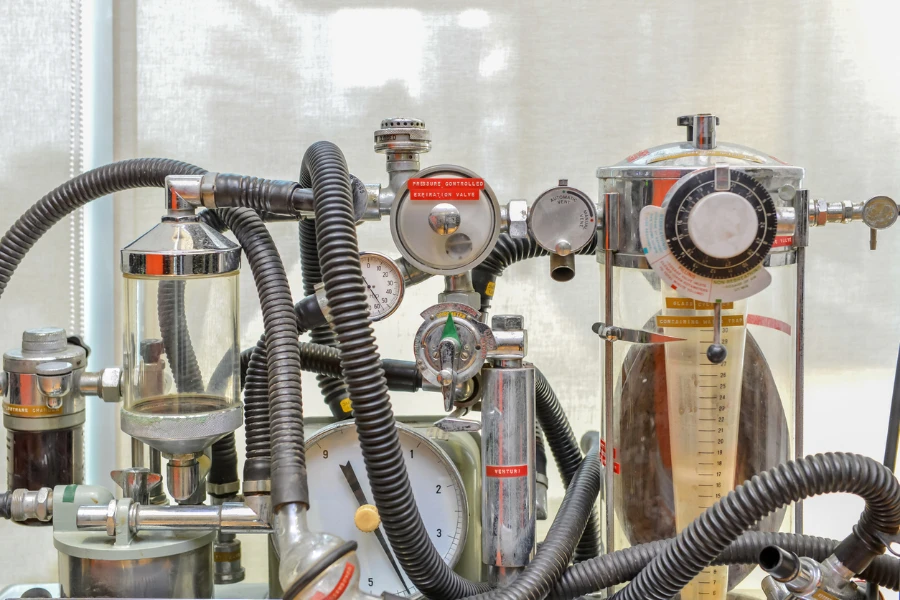Oxygen concentrators have become indispensable in providing respiratory support for various medical conditions. This comprehensive guide dives into the machinery behind oxygen concentrators, how they function, their usage, costs, and the top models available today. Whether you’re a healthcare professional, a patient, or simply curious, this article will arm you with the knowledge you need.
Table of Contents:
– What is an oxygen concentrator?
– How do oxygen concentrators work?
– How to use an oxygen concentrator
– How much does an oxygen concentrator cost?
– Top oxygen concentrators on the market
What is an oxygen concentrator?

An oxygen concentrator is a medical device designed to deliver oxygen to patients with breathing-related disorders. Unlike traditional oxygen tanks, which can run out of oxygen, concentrators filter and generate oxygen from the ambient air, providing an endless supply as long as the device is powered. This makes them a more convenient and safer option for long-term oxygen therapy.
The evolution of oxygen concentrators over the years has made them more accessible and easier to use. Modern units are portable, efficient, and capable of delivering oxygen at various flow rates to meet individual needs. This adaptability has improved the quality of life for many patients, allowing them greater mobility and independence.
Understanding the critical role oxygen concentrators play in healthcare, it’s essential to delve into how these devices operate and how they can be optimized for individual use. Their design and functionality are marvels of modern engineering, combining air compression, filtration, and molecular sieve technology to provide life-sustaining oxygen.
How do oxygen concentrators work?

The principle behind oxygen concentrators is relatively straightforward yet ingenious. At its core, the device draws in room air and passes it through a series of filters to remove nitrogen and other impurities, leaving behind highly concentrated oxygen. This process involves several key components working in harmony: an air compressor, two molecular sieve beds, a pressure valve, and a series of filters.
First, the air compressor raises the air pressure and directs it into one of the molecular sieve beds. These beds contain zeolite, a material that selectively adsorbs nitrogen from the air. While one bed is adsorbing nitrogen, the other is desorbing it to the outside, thanks to a pressure swing adsorption (PSA) process. This cycle ensures a continuous flow of oxygen.
The final stage involves passing the concentrated oxygen through a fine filter to remove any remaining impurities before it is delivered to the patient via a nasal cannula or mask. The purity of oxygen produced by concentrators can reach up to 95%, which is suitable for most therapeutic uses. Understanding these technical aspects is crucial for anyone involved in the selection, operation, or maintenance of an oxygen concentrator.
How to use an oxygen concentrator

Using an oxygen concentrator correctly is vital for ensuring the device operates efficiently and safely. First, it’s important to place the concentrator in a well-ventilated area to facilitate air intake and to avoid overheating. Before turning the device on, connect the nasal cannula or mask, and ensure all connections are secure to prevent oxygen leaks.
After powering on the device, adjust the flow rate according to the prescription or healthcare provider’s instructions. It’s crucial to start with a lower setting before gradually increasing to the desired flow rate to avoid discomfort or potential health risks. Regular maintenance, such as cleaning or replacing filters and checking for any signs of wear or damage, is also essential for optimal performance.
For those using a portable oxygen concentrator, battery life is an important consideration. Ensuring the device is fully charged before leaving the house and carrying spare batteries or a charger can help avoid interruptions in oxygen therapy. Familiarity with the device’s alarms and indicators is also crucial for troubleshooting any issues that may arise during use.
How much does an oxygen concentrator cost?

The cost of oxygen concentrators can vary widely based on several factors, including the type (portable or stationary), brand, features, and where it’s purchased. On average, stationary concentrators cost between $500 and $2000, while portable models can range from $1500 to $3500 or more. The price reflects the technology, battery life, flow rate capabilities, and additional features such as pulse dose delivery or oxygen purity indicators.
Insurance coverage and financing options can significantly reduce out-of-pocket expenses for those requiring an oxygen concentrator. Many insurance plans, including Medicare, cover oxygen therapy equipment under durable medical equipment (DME). However, eligibility requirements and coverage limits can vary, so it’s important to consult with your insurance provider.
For individuals without insurance or those facing high costs even after coverage, there are assistance programs and refurbished options that can make oxygen concentrators more affordable. Researching and comparing prices from different suppliers, as well as exploring available discounts or payment plans, can help manage the financial aspect of oxygen therapy.
Top oxygen concentrators on the market

When it comes to selecting an oxygen concentrator, the options can be overwhelming. However, several models stand out for their reliability, performance, and user-friendly features. The Inogen One G5, for example, is highly regarded for its lightweight design and long battery life, making it an excellent choice for those needing a portable option.
For stationary use, the Respironics EverFlo is a popular choice due to its compact size, quiet operation, and low maintenance requirements. Its energy efficiency and durable design make it a cost-effective option for continuous oxygen therapy at home.
The Invacare Platinum Mobile Oxygen Concentrator is another top contender, offering a balance of portability and performance. With its rugged design and water-resistant casing, it’s built to withstand the demands of active users. Its customizable flow settings and easy-to-read display further enhance its appeal to a wide range of patients.
Conclusion
Oxygen concentrators are a lifeline for individuals requiring supplemental oxygen, offering freedom, mobility, and the convenience of unlimited oxygen supply. Understanding how these devices work, how to use them properly, and what options are available can empower users to make informed decisions about their oxygen therapy. With advancements in technology and a range of models to choose from, finding the right oxygen concentrator has never been easier. Whether you’re in the market for a portable or stationary unit, the key is to focus on your specific needs and consult with healthcare professionals to ensure the best outcome for your health and lifestyle.



